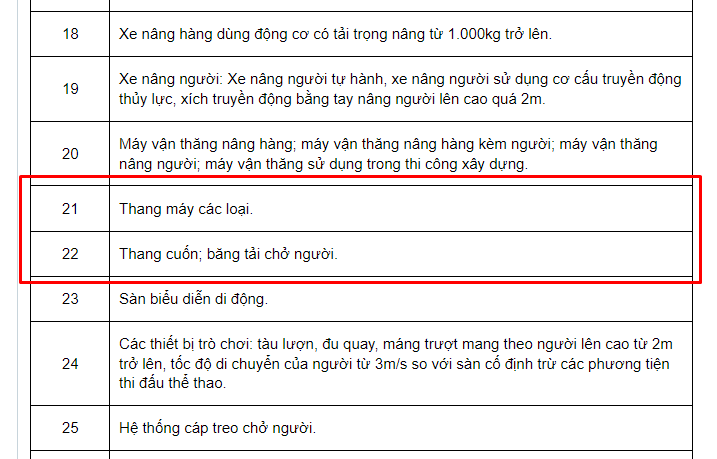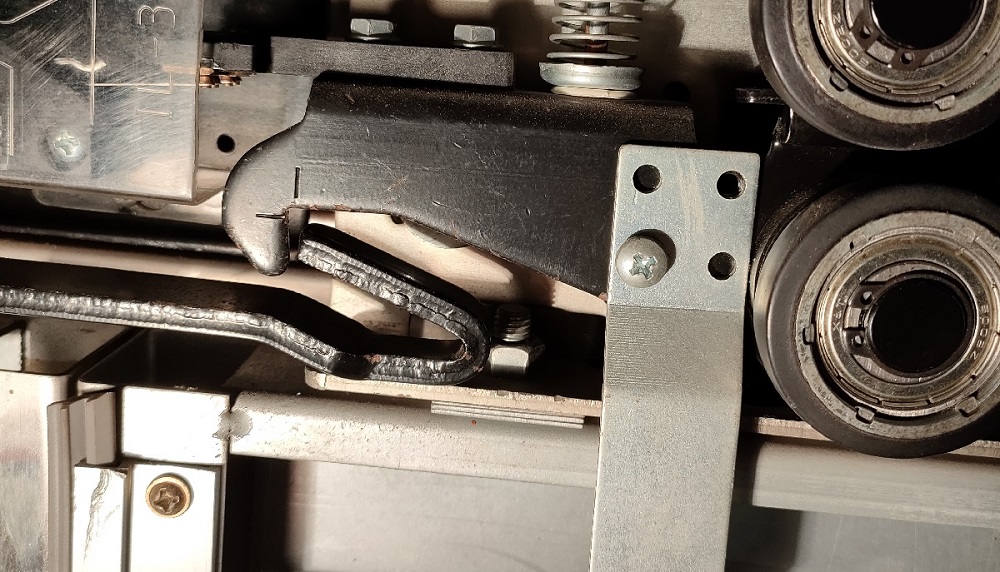EM – On May 22nd, a restaurant’s dumbwaiter fell on a woman’s head, causing her serious injury. Previously, on March 13th, an incident also occurred where a kindergarten staff member fell to her death into the pit of a dumbwaiter elevator. Thus, there certainly needs to be more drastic intervention and attention towards the unforeseeable dangers caused by dumbwaiters.
According to Bac Giang Newspaper, on May 22nd , Bac Giang Provincial General Hospital had just treated an accident, in which a restaurant’s dumbwaiter seriously injured a woman’s head.
The patient is Mrs. D.T.H (SN 1965), she lives in Tien Phong commune (Yen Dung, Bac Giang). Mrs D. T. Hwas brought to the hospital at 12 o’clock on May 21stby her family members in a state of coma, respiratory failure, agitation, shortness of breath, cyanosis of the lips and extremities, rapid pulse, purple marks on the front of the neck as if it was caused by a rope.

Patient D.T.H being monitored at the Emergency Department (Photo: Mai Toan/Bac Giang Newspaper)
Her relatives said that the family members had opened a restaurant and used a dumbwaiter to transport food. On May 21st , they called a mechanic to fix the elevator while Mrs. H was away. After Mrs. H had returned, she attempted to clean up the third floor of the restaurant, which involved her leaning into the cabin of the dumbwaiter. However, during this time, a repairman on the 4th floor put the elevator into operation, unknowingly caused the elevator to descend and injured Mrs. H head and neck. Fortunately, there were many people available to timely find her, carry out first aid and rush Mrs. H to the emergency room.
When they arrived at the hospital, the condition of Mrs. H was deemed as highly critical, involving a high risk of death, therefore, the medical team urgently carried out the emergency treatment by administering anti-shock fluids, intubating and giving her invasive ventilation to keep track of vital stats. By May 22nd , the patient was out of danger, awake, communicated well and was able to breathe on her own.
Before that, Dan Tri newspaper also reported on a heartbreaking accident atthe 14 Kindergarten (Tan Binh District, Ho Chi Minh City): Mrs. T.T.X.C (SN 1970), a service worker,fell into an elevator pit at the school on the morning of March 13th. After the injury, the school gave first aid, took the injured individual to Tan Binh District Hospital and then transferred her to Thong Nhat Hospital. Unfortunately,on March 15th, Mrs. C passed away.
Encountering incidents with elevators and dumbwaiters is not a new phenomenon.
On the evening of September 26th, 2017, a young man working at a restaurant on Tran Hung Dao Street (Hoan Kiem, Hanoi) got his head stuck while taking food out from a dumbwaiter. By the time emergency services arrived at the scene, the victim was already dead.
On February 8th, 2020, a cargo lift at Ngo Van Hau business household on Nguyen Van Ninh Street (Tan Phu District, Ho Chi Minh City) fell, resulting in the death of 1 person and injuring 2 people.
On May 29th, 2020, an elevator at Kim Dong Kindergarten, on 287ª Tan Hoa Dong street (Tan Binh District, Ho Chi Minh City) became stuck, resulting in the death of one person.
The mechanism of operation of the dumbwaiter is as follows: Place the goods directly on the trays or use a multi-story trolley to push the goods into the elevator cabin, press the button to deliver the goods to the floor of destination. Normally, the speed of a dumbwaiter is within the range of 0.3 – 0.5 m/min. As the elevator arrives, the person on the receiving floor opens the cabin door (usually using a manual door opener) to take out the goods and then close the door. Any floor that requires the service of the dumbwaiter will press the button to call the elevator, open the floor door and place the goods in. However, the dumbwaiter does not require a door in the cabin but only at each floor.
Due to the simple,mechanism of operation, with manual procedures, many people overlook the safety factor. Furthermore, sometimes, due to the limited investment budget, the elevator may not be correctly installed with standardized safety equipment, which can result in accidents during use .
Circular No. 36/2019/TT-BLDTBXH issued by the Ministry of Labor, Invalids and Social Affairs on December 30th, 2019, contains a list of machines, equipment, supplies and substances subject to strict requirements on hygiene and occupational safety, which includes elevators of all kinds. According to this classification, food lifts belong in Category V: Out-of-cabin controlled lifts used only for transporting goods. However, most of the dumb waiters currently in circulation are often homemade, and unqualified according to national technical regulations.

Elevators and escalators belong to Section I. Machines, equipment and supplies subject to strict requirements on occupational safety and hygiene.
Mr. Tran Tho Huy – General Director of Thien Nam Elevator Joint Stock Company, with his many years of experience in the elevator manufacturing industry, assesses that there are unsafe risks from dumbwaiters and lifts such as:
– Cable: Due to the limitation of installation area, the pit is too narrow, thus orienting consumers to choose a hoist with only 1 cable, at the expense of the control system’s safety as the sole cableis easy to break under the weight of the dumbwaiter.
– Inadequate safety system: there is no safety lock on the landing door, brake system, load sensor, etc.
– Calculation and analysis of loads to arrange cabling, backup brakes, etc., are incomplete.
– Load and prevention, are not tested … in accordance with regulations.
Dumb waiters are often used at restaurants, boarding, half-boarding schools, etc., all of which are frequented by many people. However, there are numerous problems with the process of using and maintaining this device :
– Either at the request of the customers or the maintenance worker may arbitrarily turn off the safety latch of the floor door so that the floor door remains open even when the cabin is not at that floor.
– The user may open the door to observe the position of the lift in the pit, hence possibly causing the cabin to hit their head.
– As the lift is stopping for delivery of goods, there may be a calling signal from another floor causing the dumbwaiter to move , leading to jamming of body parts, and dropping of goods, …
– The maintenance process may not contain measures to ensure occupational safety, warning signs, safety belts, etc.
– Infrequent maintenance, which easily leads to breakdowns and errors during the operation of the elevator.
Not only with dumbwaiters, but this is also a common error with elevators in general, which is the cause of about 70% of lift accidents.
There are two types of landing doors for dumbwaiters: hinged doors or manual sliding doors. No matter what type of door is used, it works according to a strict proceduresubjected to two basic factors: the mechanical and electrical system. Regarding the mechanical system, the floor door has a closed hook-shaped latch, which normally cannot be opened, if you want to open it forcibly, you will need a specialized key. As per the operating procedure, when the cabin stops at a floor, the door sill will push the latch of the landing door, then the door motor on the roof of the cabin will be activated to open the door.

Mechanical latch of elevator doors
With regards to the electrical system, the door can only be opened when the elevator has reached the level of the floor. If the floor door opens suddenly, the electrical system will cut off the safety circuit and the whole elevator system will come to a halt because the processor evaluates the elevator as not safe enough to operate.
The lift, when installed correctly, will not operate if one of the connector is not completely closed (when the circuit is open). Based on this principle, the elevator is designed with an interlock system to ensure that the floor door will not be able to open if the cabin has not stopped at the correct, designated point on a floor.
The floor doors are worn out after a certain period of use, due to non-compliance with technical regulations in manufacturing or even due to the safety brake latches being switched off. .Thus easily causing the error of “the door not clsoing properly” or the door staying open even though the lift has not arrived at the level of the floor door. Such error can bring about danger for users when opening the floor door, putting their hands heads in the elevator pit to check on the location of the lift while it is moving, causing a hand , head jamming accident…
As the dumbwaiter or cargo lift is often used to transport goods accidents involving humans will be limited. However, the reality shows that dumb waiters and goods elevators are installed in environments where many people and users continuously interact with the device. The working safety risks are always lurking.
Therefore, the unpredictable danger from good-carrying elevators needs to receive much more drastic and synchronous interventions amongst users, manufacturers, maintenance and repair units and the authorities.
Vũ Dương



